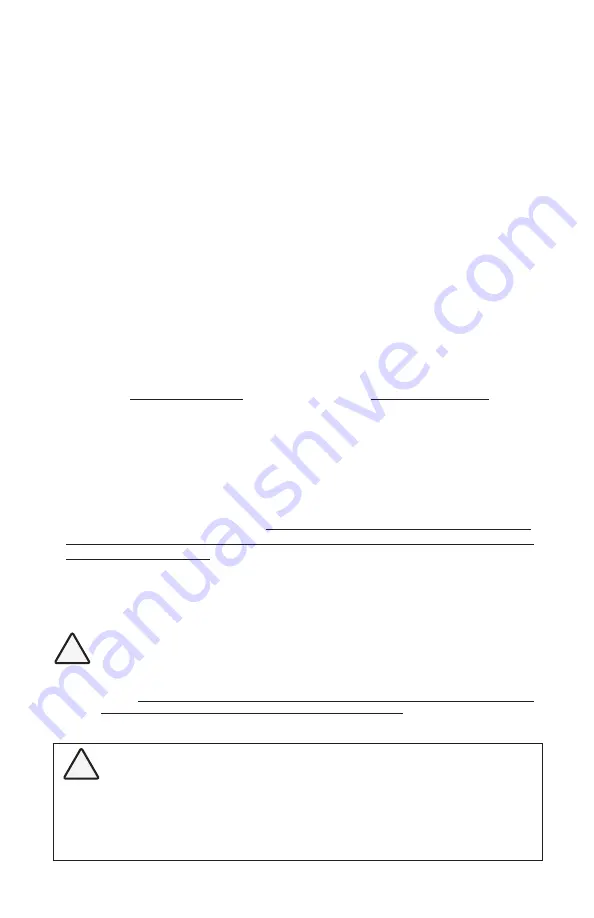
38 | SAMLEX AMERICA INC.
SAMLEX AMERICA INC. | 39
8.4 DC SIDE CONNECTIONS
8.4.1 Preventing DC Input Over Voltage
It is to be ensured that the DC input voltage of this unit does not exceed 16.5 VDC for
PST-600-12 or 33.0 VDC for PST-600-24 to prevent permanent damage to the unit. Please
observe the following precautions:
- Ensure that the maximum charging voltage of the external battery charger /
alternator / solar charge controller does not exceed 16.5 VDC for PST-600-12 or 33V for
PST-600-24
- When using Diversion Charge Control Mode in a Charge Controller, the solar / wind /
hydro source is directly connected to the battery bank. In this case, the Controller will
divert excess current to an external load. As the battery charges, the diversion duty
cycle will increase. When the battery is fully charged, all the source energy will flow
into the diversion load if there are no other loads. The Charge Controller will discon-
nect the diversion load if the current rating of the Controller is exceeded. Disconnec-
tion of the diversion load may damage the battery as well as the inverter or other DC
loads connected to the battery due to high voltages generated during conditions of
high winds (for wind generators), high water flow rates (for hydro generators). It is,
therefore, to be ensured that the diversion load is sized correctly to prevent the above
over voltage conditions.
- Do not use solar panel/ array to directly charge the battery bank connected to the
inverter. Use appropriate Charge Controller between the solar panel/ array and the
battery bank. Using solar panel/ array to directly charge the battery will lead to over
voltage shutdown of the inverter and possible damage due to battery voltage rising
close to the level of the open circuit voltage of the solar panel(s) when the battery
is fully charged and is in Float Stage (under this condition, the battery will be drawing
very low trickle charge current & voltage of the unregulated solar panel(s) will rise close
to its Open Circuit Voltage).
- Do not connect this unit to a battery system with a voltage higher than the rated
nominal battery input voltage of the unit.
8.4.2 Preventing Reverse Polarity on the Input Side
!
CAUTION!
Damage caused by reverse polarity is not covered by warranty! When making battery
connections on the input side, make sure that the polarity of battery connections is
correct (Connect the Positive of the battery to the Positive terminal of the unit and the
Negative of the battery to the Negative terminal of the unit). If the input is connected
in reverse polarity, DC fuse(s) inside the inverter will blow and may also cause permanent
damage to the inverter.
!
ATTENTION!
Des dégats causés par un inversement des polarités ne sont pas couverts par la garantie!
Quand vous faites des connexions à la batterie du côté d'entrée, veuillez assurer que les po-
larités sont mises du bon côté (Liez le Positif de la batterie à la borne Positive de l'appareil
et le Négatif de la batterie à la borne Négative de l'appareil). Si les polarités de l'entrée sont
mises à l'envers, le(s) fusible(s) CC dans l'onduleur va/vont s'exploser et pourrait causer des
dégats permanents à l'onduleur.
SECTION 8 |
Installation
















































